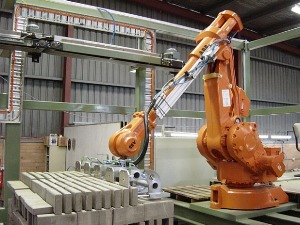Most of the present day robots function in a greatly structured environment, where both the workstation and the workpiece are known.
However, the next generation of robots, which are being developed would manage and handle an unstructured environment, where the robots would be able to see the orientation and shape of the items. Applied Robotics, a Sydney- based company has been developing special purpose robotic machines and automation systems for the Australian and other export markets in the world from the year 1985.
 VisionSystems Robot for Palletizing
VisionSystems Robot for Palletizing
According to Dr. Paul Wong, the Managing Director of Applied Robotics, expanding the capability of the robot to include the less structured manufacturing settings was the next wave of change. This wave would provide the robot sensing capacities, which would give the robot, flexible infeed. Wong reveals that vision systems would be the best sensors, as a camera could show a digital image for analyzing and obtaining the size, shape, orientation and position of the workpiece, which is to be selected. The camera in the vision system could be fixed on the robot or it could be mounted as an eye over the work space, which would then produce a three-dimensional map of the area.
Wong further states that manufacturing sectors such as electronic and automotive industries having simple tasks to be carried out were able to take on automation technologies much ahead of other industries such as clothing and footwear and hence these industries lost out to countries, which had cheap labor available in plenty. However, even these sectors would be able to utilize vision systems and automation in the future. The main usage of vision systems such as Omron Technology would be in quality control, especially in manufacturing blocks and bricks. It observes all the four sides of the brick looking out for corner and edge chipping, scars, pit holes or cracks and rejects the brick on the basis of that one fault or group faults at a rate of 60 bricks per minute, thus making sure that only the good products are delivered to customers.
Applied Robotics has also installed Omron technology vision systems at Dux Hot Water for performing parameter set up and product identification for a multi-robot welding and assembly workcell, which contains an unstructured infeed of workpieces.